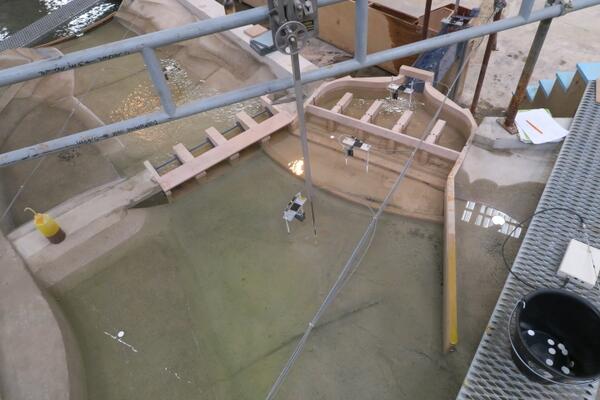
Analysis of sediment transport through the Rusumo dam reservoir
How the physical model supports design engineers with management of sediment transport through the dam and the water intake.
Context
Rusumo Falls hydropower scheme (Rwanda) - Client: Nelsap - Scale: 1/60
In the context of the development of the Rusumo Falls hydropower scheme, the dimensional design of the structure (dam and water intake) must be checked for the various hydraulic conditions encountered: normal hydroelectric operation and a variety of flood levels.
Purpose of the modelling study

- Hydraulic operation of the water intake in hydroelectric operating conditions,
- Operation of the flood spillway
- Analysis of sediment transport in the reservoir and optimisation of operation of the components limiting transfer of the largest sediment particles towards the powerhouse
- Definition of optimal flushing conditions in order to minimise silting of the reservoir in front of the water intake.
What does the model replicate?
- The bed of the Kagera river for 700m upstream from the dam in order to correctly represent the hydraulic conditions of supply to the structures
- The dam and flood spillway, equipped with 4 gated bays
- the water intake and its complex geometry
- 200 m of the headrace.
|
Design flow rates |
Represented length of the Kagera river |
Characteristics of structures |
|---|---|---|
|
Rated discharge: 100-year flood: 10,000-year flood: 1230 m3/s |
1 km |
Dam: 4 bays Water intake: 5 bays Headrace: |
